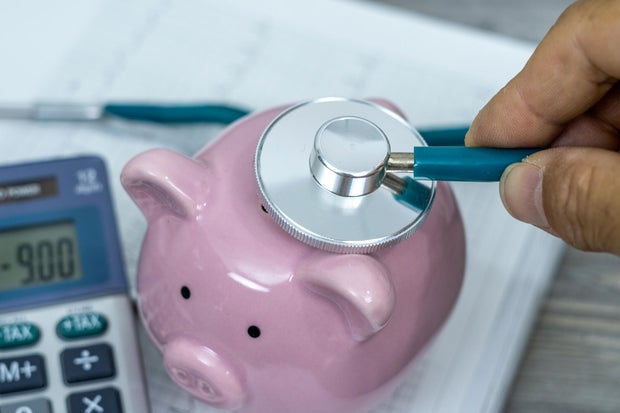
Who qualifies for medical debt relief now?
1. July 2025
Getty Images
Medical bills don’t always arrive when you’re prepared to deal with them. They tend to show up after a serious medical emergency, in the middle of a recovery from an injury or just when you’re starting to feel financially stable again. And in today’s economy, where budgets are stretched due to inflation, insurance doesn’t always cover what you’d expect and medical costs keep rising, it’s easier than ever to find yourself staring down a medical balance you can’t afford to pay. Just ask the over 100 million Americans who owe a collective $220 billion in medical debt right now.
And, according to recent surveys, tens of millions of people are either putting off necessary medical care due to the high cost or are turning to their borrowing options, like credit cards and personal loans, to cover their medical expenses. Millions of others have already fallen behind and are trying to avoid collections, wage garnishment or bankruptcy. But if you’re dealing with your own unaffordable medical bills right now, the good news is that there may be more options than you’d think.
From hospital-based programs to full-blown debt relief strategies, the options outlined below could help you get rid of your medical debt for good. The key is knowing which ones you qualify for and how to take the next step before the bills spiral out of control.
Find out how you can start tackling your expensive medical debt today.
Who qualifies for medical debt relief now?
Struggling to pay off your medical debt? Here’s who could qualify for medical debt relief today:
Those who qualify for hospital charity care
Hospital charity care offers the most direct path to medical debt relief for many people. Federal law requires that nonprofit hospitals — which account for nearly three-fifths (58%) of community hospitals — provide some level of charity care as a condition of receiving tax-exempt status, which means most hospitals must offer bill forgiveness or significant discounts to patients who meet their financial criteria.
While it can vary by state, in general, households under 204% of the federal poverty level qualify for free care in 2025, and families under 322% qualify for discounted care. However, many hospitals are more generous with their assistance programs. For example, some will provide free or heavily discounted care to those with income that is at or below 200% and 300% of the federal poverty guidelines, though it depends on the hospital policy.
To qualify, you will typically need to show documentation of your income and household size. Many hospitals will also consider patients with severe medical hardships, even if their income exceeds the standard guidelines. You should also know that if a patient qualifies for charity care, the law requires nonprofit hospitals to refund any payments that have already been made toward that bill, meaning you can apply even after paying part of what’s owed.
Learn more about the benefits of pursuing debt relief now.
Those pursuing debt forgiveness
For those who don’t qualify for charity care or state programs, working with a debt relief company on debt forgiveness, also known as debt settlement, could offer another path to having your medical debt forgiven. During the debt settlement process, a debt relief expert will try to negotiate with your creditors to reduce your balances in return for lump-sum payments on the accounts. To qualify, though, you typically need to be behind on your payments, have at least $5,000 to $10,000 in unsecured debt and demonstrate an inability to repay the full amount.
Taking this path can help reduce your medical debt significantly — often by 30% to 50% or more, depending on the creditor’s flexibility — and it tends to suit people with multiple medical debts or those with debts that are near or already in collections. But while you can use this type of debt relief to try and reduce your medical debt, it comes with a few downsides. Your credit may take a hit due to late payments, for example, and the process takes months or years to complete. The fees debt relief companies charge can also eat into savings, so it’s important to weigh all the factors before taking this route.
Those filing for bankruptcy protection
For those with overwhelming medical debt and limited income, filing for bankruptcy offers the most comprehensive relief option, as it wipes the slate clean of your medical debt and your other types of debt or reorganizes your debt to make it more affordable.
There are two main types of bankruptcy for individuals: Chapter 7 and Chapter 13. Chapter 7 bankruptcy can eliminate most unsecured medical debt entirely. However, it requires passing a means test, showing your income is below your state’s median income for your household size. If you don’t qualify for Chapter 7, Chapter 13 requires regular income sufficient to make structured payments over three to five years.
The main benefit of filing for bankruptcy is that it provides legal protection from creditors and can eliminate your medical debt in full. However, it also has serious long-term credit consequences, so it should be considered only after exploring other options.
The bottom line
Dealing with medical debt can be overwhelming, but it’s important to remember that you’re not powerless. There are real, actionable ways to get relief, whether you qualify for hospital charity care, pursue your debt settlement options or file for bankruptcy as a last resort. In order to deal with the issue, though, you’ll want to act early, ask the right questions and choose the solution that best fits your financial situation. Doing that will help ensure you’re on the right path to getting rid of your medical debt for good.
